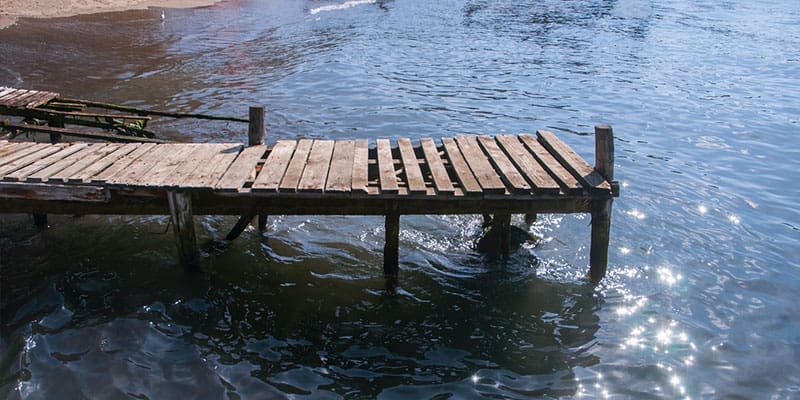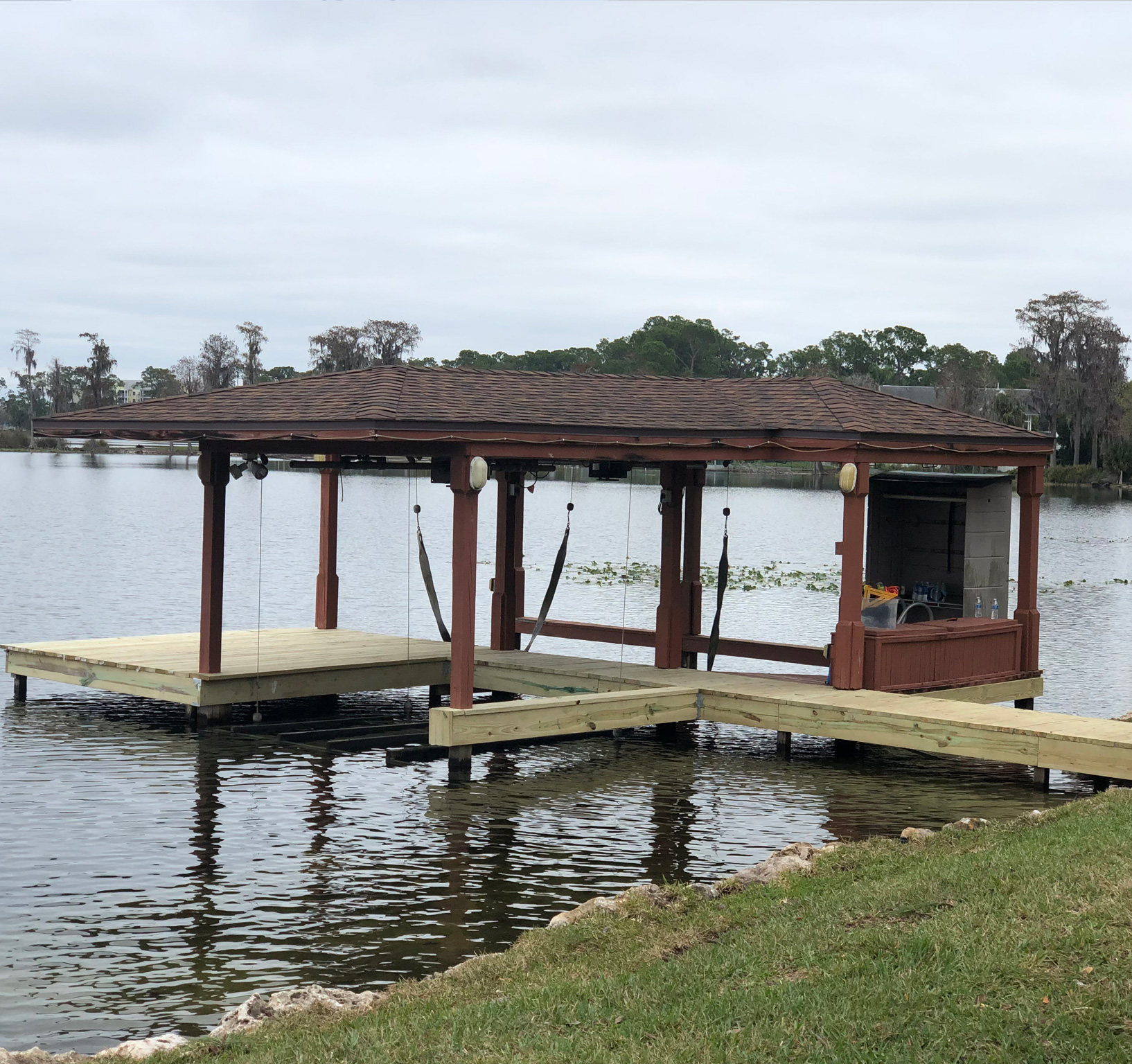Exactly How to Address Common Dock Repair Work Issues for Safe Water Activities

Identifying Common Dock Issues
Recognizing typical dock issues is crucial for preserving the performance and safety of your beachfront residential or commercial property. Routine inspections can assist uncover issues before they become extreme, ensuring both the longevity of the dock and the safety of those that utilize it. One prevalent issue is loose or rusty fasteners. In time, screws, screws, and various other fasteners can come to be loosened due to continuous direct exposure to water and climate aspects, leading to architectural instability.
Another usual problem is the destruction of flotation protection tools. These tools are vital for keeping the dock buoyant, and any damage or slits can cause the dock to checklist or sink. Regularly looking for leakages or waterlogged drifts can preempt more substantial problems.
In addition, algae and barnacle accumulation on the dock's surface can produce unsafe and dangerous conditions. This biofouling not only postures a risk to users however can additionally accelerate the deterioration of the dock products.
Lastly, examining for signs of corrosion on steel components is crucial. Rust can endanger the integrity of the dock's framework, making it dangerous. By routinely recognizing these usual dock issues, you can guarantee that your dock remains safe and secure and functional for years to find.
Fixing Rotting Wood
When resolving the concern of decomposing wood on your dock, it is essential to act promptly to avoid additional deterioration. Begin by completely evaluating the whole framework to identify all impacted areas. Utilize a screwdriver to probe the wood; if it sinks in quickly, the wood is likely decomposed and requires immediate attention.
Be sure to reduce back to healthy and balanced, solid timber, guaranteeing you get rid of all jeopardized material. After removal, deal with the continuing to be wood with a wood preservative to prevent future rot.
Following, replace the gotten rid of areas with marine-grade lumber or pressure-treated wood, which are more immune to water damage. Secure the brand-new pieces with galvanized or stainless-steel fasteners to avoid corrosion. In addition, applying a water resistant sealant to the brand-new wood can provide an added layer of security.
Protecting Loose Boards
Exactly how do you guarantee your dock continues to be functional and risk-free for all its users? One important aspect is protecting loosened boards, which can or else position significant threats. Loose boards not only boost the danger of tripping however can additionally compromise the structural stability of the whole dock.

For reinstallation, make use of stainless or galvanized steel screws, as these materials offer superior resistance to deterioration in marine environments. Ensure the screws are long sufficient to permeate deep into the underlying support structure, yet not as long that they stick out via the dock's surface area. Pre-drilling pilot openings can help stop the timber from splitting.
Finally, preserve a routine examination timetable to determine and attend to any type of brand-new problems quickly. By securing loose boards efficiently, you add to the general safety and longevity of your dock, making it a trustworthy platform for water tasks.
Supporting Unsteady Pilings
Guaranteeing the security of unsteady pilings is extremely important to preserving a functional and safe dock. Unstable pilings can endanger the whole structure, posturing considerable dangers to users and possibly causing costly repair work. The first step in supporting these important components is a thorough assessment. Examine the pilings for indications of rot, damage, or moving. Use a degree to examine for vertical positioning and ensure they are driven deep enough right into the substratum to give appropriate assistance.
If the pilings are discovered to be unsteady, one efficient approach for support is using extra supporting. Cross-bracing with treated lumber or galvanized metal can considerably enhance stability. Anchor the dental braces safely to both the pilings and the dock structure to disperse loads evenly.

Routine upkeep and periodic review of the pilings' stability are vital to making sure long-term dock safety and capability.
Changing Rusty Equipment
Resolving unsteady pilings is simply one element of keeping a dock's honesty; one more vital issue is replacing rustic hardware. In time, exposure to wetness and salt can result in the oxidation and corrosion of braces, screws, and screws, compromising the Learn More entire structure's safety. Regular inspection for rust is vital, specifically after serious climate or seasonal modifications.
When corroded equipment is identified, instant activity is required. Begin by selecting marine-grade stainless-steel or galvanized hardware, both developed to stand up to the harsh aquatic environment. Make sure that you have try this web-site the ideal devices, such as screwdrivers and wrenches, to securely remove the old, rusty pieces without creating further damages to the dock.
After removing the corroded hardware, thoroughly clean the influenced areas to get rid of any kind of recurring corrosion or debris. Apply a rust-inhibiting guide to exposed metal surface areas prior to mounting the brand-new equipment. Tighten all components securely to avoid future loosening, and regularly inspect the installations to make certain recurring security.
Replacing rusty hardware not just prolongs the dock's life expectancy however additionally considerably enhances the security of water tasks. By proactively handling rust, you secure both the framework and its individuals, guaranteeing a pleasurable and protected beachfront experience.
Final Thought
Regular evaluations and upkeep are crucial to attend to common dock repair service problems and ensure secure water tasks. Such proactive procedures add to the general safety and functionality of dock frameworks, fostering a safe and secure atmosphere for water-based activities.
Guaranteeing the safety and security of water activities pivots considerably on the appropriate upkeep and repair work of anchors (Dock Repairs). These devices are crucial for maintaining the dock buoyant, and any type of damages or punctures can cause the dock to checklist or sink. By routinely determining these usual dock problems, you can make sure that your dock continues to be functional and secure for years to come
Making sure Click This Link the security of unstable pilings is paramount to preserving a functional and secure dock.Routine examinations and maintenance are vital to resolve typical dock repair work problems and make certain secure water activities.